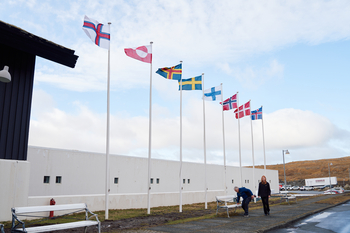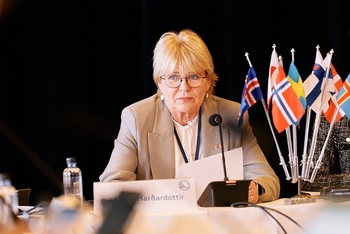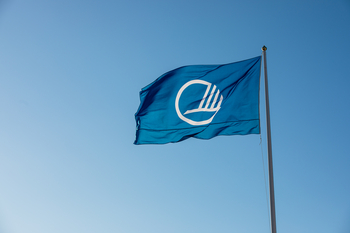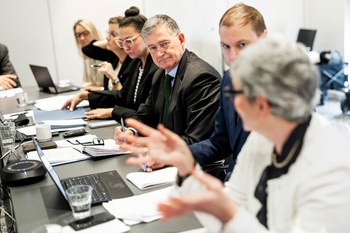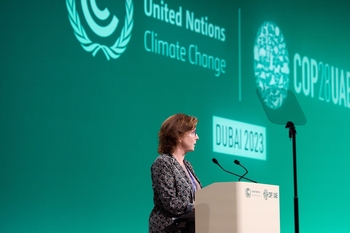70 years of the Nordic Council – still delivering Nordic synergies
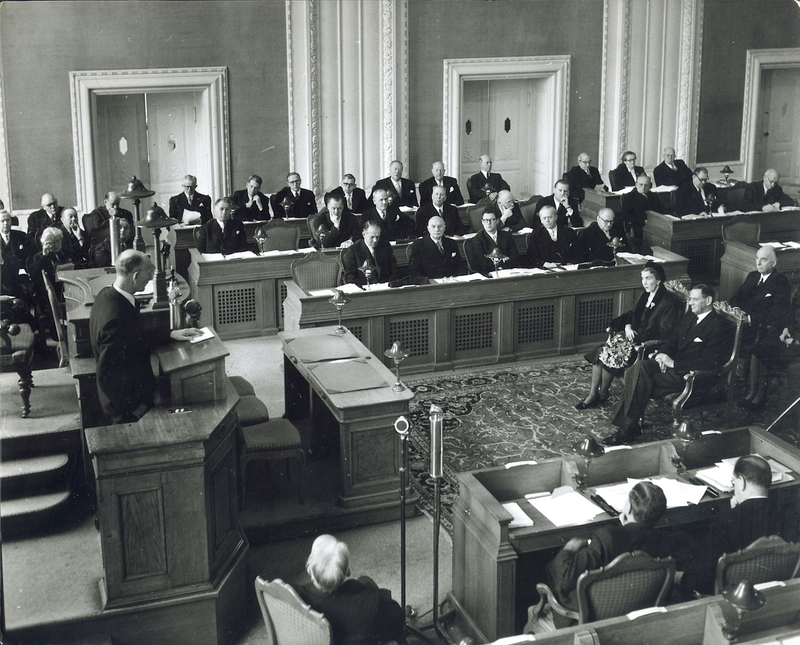
The first meeting of the Nordic Council was held on 13 February 1953, almost a year after it was founded. The picture is from the opening of the meeting in Christiansborg. Among others, King Fredrik and Queen Ingrid were present.
Just a year after the meeting of the foreign ministers, the Nordic Council convened for its first official meeting in Christiansborg, Copenhagen, on 13 February 1953. Among those present were the Danish King Frederik IX and, of course, the former Danish Prime Minister, Hans Hedtoft, who was one of the pioneers of the project and who was also elected the first President of the Nordic Council.
The first meeting of the Nordic Council was followed with considerable interest. This was a celebratory and almost historic day, if you believe those who spoke at the meeting. Here’s what the chair of the Swedish delegation, Nils Herlitz, had to say in the minutes of the council’s very first meeting:
“Even if one is clear that it is only the future that can determine what has weight and significance in history, and thus assess with certainty in what way this day is historical, one cannot fail to see it in historical perspective. What is being done today is an attempt by the national governance of our Nordic countries to extend beyond national borders in a lasting way, and to intervene in Nordic life.”
One country was missing
However, there was a bone of contention right from the start. Only Denmark, Iceland, Norway, and Sweden were involved from day one. Finland was missing. The reason was Russia, which had suspicions that Finland would orient itself towards co-operating with NATO countries.
There was no doubt that Finland was more than welcome in the club. This is evidenced in an article in Nordens Tidning, a members’ magazine for the Swedish Norden association, which reported from the first ever meeting of the Nordic Council:
“According to the Nordic Council’s statutes, Finland can accede whenever it wishes to do so. Until such a connection becomes possible, it’s more important than ever that everything is done so that the ties between Finland and the other Nordic countries are not only kept intact, but made even stronger than before.”
And in the end it became possible. Finland joined in 1955. Today, the Faroe Islands, Greenland, and Åland are also full members.
Important milestones
Today, 70 years after the birth of the Nordic Council, it’s high time to look at what this co-operation has achieved.
There are some obvious milestones. The Nordic Passport Union from 1954 is without a doubt the most important result over the years.
However, a lot has happened since then. The common labour market, Nordic nutrition recommendations, freedom of movement, the Swan ecolabel, the unique Nordic co-operation on energy policy, Nordgen with the seed bank in Svalbard, the Nordic education programme Nordplus, Nordjobb which provides jobs for young people in other Nordic countries, and cultural co-operation in countless areas can all be added to the list.
In the spirit of honesty, not all achievements can be attributed to the Nordic Council. The Nordic Council of Ministers, which is the body for intergovernmental co-operation, has also worked on the same issues and many solutions came as the result of this co-operation.
If we travel back in time to the 1950s, we see that some issues from that era are still familiar today. At its first meeting, among other topics, the Nordic Council discussed “corporate, social, and legal rights” across the Nordic borders, as well as an issue that’s actually been resolved – a bridge/tunnel across the Øresund.
Active efforts to support the day-to-day lives of those living in the Nordic Region
The 87 members of the Nordic Council are continuing to work actively on developing solutions that will improve the day-to-day lives of Nordic residents, especially when it comes to improving opportunities to work across borders without barriers.
In recent years, foreign and security policy have also become an increasingly important area for the Nordic Council, after having been a taboo for several decades. The Nordic Council places a strong emphasis on democratic values and takes a stand on foreign policy issues as well.
There’s still a strong demand for Nordic co-operation among those living in the region. As many as 86 percent of those living in the Nordic Region believe that co-operation is important, according to a survey from 2021.
Important arena
The current President of the Nordic Council, Erkki Tuomioja, who’s been a member of the Nordic Council since 1970 with a break during his time as a minister, sees the Nordic Council as an important political arena.
“Nordic co-operation is very popular among those living in the Nordic Region, so we have a duty to meet their expectations and ensure that it delivers results. We are also aware that our countries are facing similar challenges in many areas of society. That’s where the Nordic Council plays an important role as an arena where we can exchange experiences and learn from each other, but also a place where we can come up with concrete proposals for Nordic solutions that will benefit our citizens.
A desire for results
Results were something that Nordens Tidning mentioned in its report from meeting.
“We in the Norden Association want to believe that history was written in Copenhagen. Whether that was really the case, only the future can tell. The creation of the Nordic Council is in itself a gratifying event, but these are the results we want to see.”
“Although we sincerely want to be in a good and trusting relationship with all nations in the world, we feel particularly closely connected to our fellow Nordic peoples and understand the rich values that the Nordic community holds for all who have a share in it.”
King Fredrik IX
“The Nordic Council should be able to become a role model for other peoples in how nations, through friendship and mutual understanding, can resolve all disputes and shape international co-operation and cohesion that must form the basis for the possibility of eradicating the danger of war in the world and creating peace on earth.”
Magnús Jónsson, chair of the Icelandic delegation
“There is controversy in the Norwegian parliament over the Nordic Council. Although many voted against it, a large majority decided that Norway should join. Those who were against the Nordic Council are also represented in the Norwegian delegation. I think we are all happy about that. I am also pleased to be able to say that it is a unanimous parliament and a unanimous people, who support the desire for the best possible co-operation between the Nordic countries. Simply, it is the form of this co-operation about which opinions are divided.”
Einar Gerhardsen, chair of the Norwegian delegation
Facts:
The Nordic Council is the official inter-parliamentary body. It has 87 members from Denmark, Finland, Iceland, Norway, Sweden, the Faroe Islands, Greenland, and Åland.
The Nordic Council meets five times a year. The most important meeting is the Session, which is held every year in week 44.
The Nordic Council has a Presidium, four committees, and five party groups.
Among other things, the anniversary year will be celebrated in connection with the Nordic Council’s other meetings and within other contexts. You can keep abreast of events in connection with the anniversary year at norden.org.
